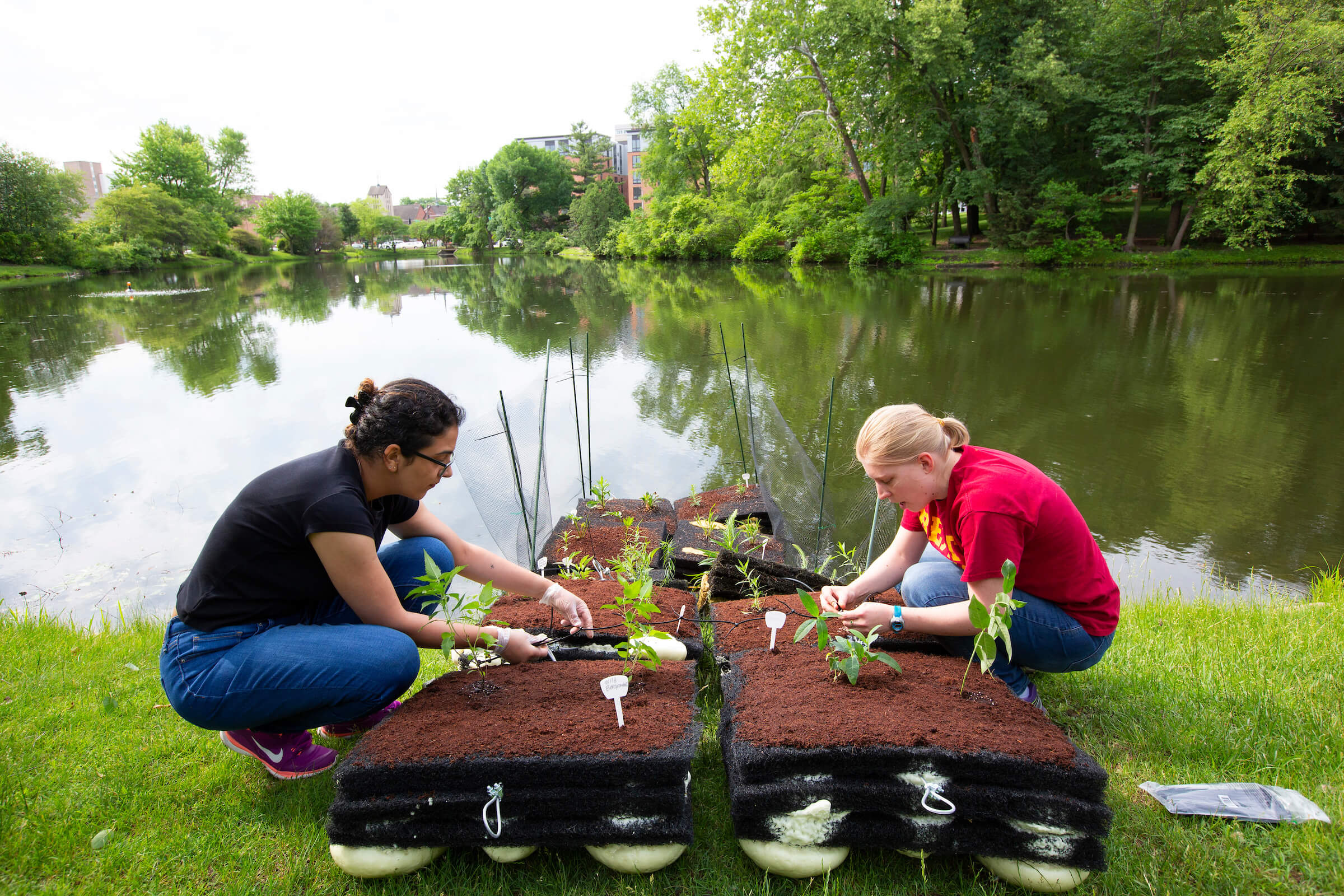The College of Design is dedicated to creating innovative solutions that address society’s challenges. Through collaboration and diverse perspectives, our faculty, staff, and students explore various research areas focused on preserving heritage, promoting sustainability, enhancing health and wellness, fostering creativity, integrating technology, advancing education, and engaging with communities.
Signature Research Areas

-
Community Engagement and Social Issues
This signature research area focuses on employing participatory design and community-based initiatives to address environmental justice, housing assessment, aging in place, and economic development within urbanizing contexts. By integrating social ecological systems theory with active listening and strategic planning, faculty navigate complex challenges such as disaster response, gentrification, and memory preservation, advocating for equitable community development and fostering resilient neighborhoods through innovative placemaking and recreation tourism strategies.
-
Design Education and Pedagogy
This signature research area emphasizes experimental teaching methodologies like field teaching and learning labs, fostering holistic art education and promoting visual and design thinking within inclusive environments. Grounded in evidence-based practices and the scholarship of learning and teaching, faculty’s work advocates for risk-taking pedagogy and participatory design approaches, fostering community building and advancing the role of art education in advocating for inclusive and creative learning experiences.
-
Design for Health and Wellness
This signature research area focuses on developing wellness and care-centered design solutions that support aging in place and accommodate neurodiversity, fostering a culture of care through human-centric design principles. Faculty members’ work addresses thermal comfort, daylighting, and indoor air quality to promote resilience and employs trauma-informed design approaches to create environments that prioritize the holistic well-being of individuals and communities.
-
Digital Design and Technology Integration
The faculty’s signature research area on digital design and technology integration explores human-centered design principles to enhance live performances and immersive experiences, employing techniques such as sound design, projection mapping, and AR/MR/XR technologies. Faculty members’ work extends into tangible computing and data visualization, integrating generative design and parametric modeling to advance building structural design and optimize building systems through innovative applications of the Internet of Things and computer simulations.
-
History, Culture, and Heritage
The faculty’s signature research area on history, culture, and heritage delves into the intersection of art and architectural history with cultural resource management, focusing on historic preservation and the preservation of rural culture and parks. Faculty explore the intricate relationships between memory, visual culture, symbology, and ideology, uncovering narratives embedded within heritage sites to inform preservation strategies and promote cultural understanding.
-
Making and Materiality
The faculty’s signature research area on making and materiality explores the convergence of digital and analog fabrication techniques, fostering experimentation with mixed media and innovative materials to create experimental structures and site-specific installations. Through collaborations in community and site art, they delve into the aesthetic dimensions of fabrication, integrating principles from material science and scientific illustration to reimagine live performances and botanical or entomological illustrations, enhancing workflows and pushing the boundaries of creative expression.
-
Sustainability, Environment, and Planning
The faculty’s signature research area on sustainability, environment, and planning delves into creating resilient environments through innovative strategies like green infrastructure and ecological design to mitigate energy consumption and reduce carbon footprints, particularly in urban settings facing challenges of gentrification and environmental justice. By prioritizing social and environmental justice design principles, faculty advocate for urban revitalization and rural land use planning, promoting transportation alternatives and recreation tourism while enhancing quality of life indicators and fostering community vitality through placemaking and wayfinding initiatives.
